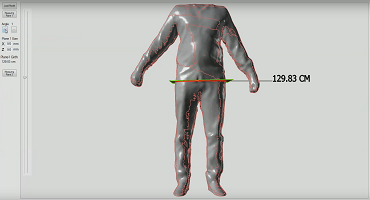Demystifying 3D Body Measurement Accuracy: What Influences It and How to Improve It

Introduction
When it comes to measuring the human body, precision isn’t just a nice-to-have; it’s essential. Whether you’re tailoring a custom suit, building a medical device, or tracking fitness goals, even small measurement errors can throw everything off.
So, what determines how accurate a 3D body scan is? And more importantly, how can you make sure you’re getting reliable results every time?
In this blog, we break down the key factors that impact measurement accuracy and how technologies like 3D Measure Up ensure precision at scale.
What Does Accuracy Mean in 3D Body Measurement?
Accuracy refers to how closely a measured value matches the “true” value of the body dimension.
- High accuracy: The Measurement is very close to reality.
- Low accuracy: Measurement deviates significantly from reality.
Accuracy is critical because inaccurate measurements lead to:
- Poor garment fitting
- Incorrect medical devices (e.g., orthotics)
- Misleading fitness tracking
- Inefficient ergonomic designs
Factors That Influence Measurement Accuracy
1. Scan Quality
The starting point. If the 3D scan is incomplete, noisy, or distorted, even the best measurement algorithms can’t produce accurate results.
Common scan issues:
- Holes or gaps in data
- Surface noise (rough textures)
- Blurred areas due to motion during capture
2. Scanner Type and Resolution
Different scanners offer different levels of precision:
- High-end structured light scanners capture fine details (up to 0.1 mm accuracy).
- Depth cameras (e.g., RealSense, iPhone LiDAR) are convenient but have slightly lower precision.
- Photogrammetry offers flexibility but depends heavily on technique.
Higher resolution generally means higher accuracy, but also larger file sizes and processing demands.
3. Landmark Detection Algorithms
Finding the correct anatomical landmarks (e.g., waist point, shoulder points) is critical.
- Manual landmarking is prone to human error.
- AI-driven landmarking (like in 3D Measure Up) ensures consistent, repeatable identification.
4. Subject Pose and Posture
Posture impacts measurements significantly:
- Slouching reduces torso length and increases waist girth.
- Raised arms distort the shoulder and chest girths.
Standard poses like the A-Pose or T-Pose help normalize posture across scans.
5. Environmental Factors
- Uneven lighting can create shadow artifacts.
- Reflective surfaces can confuse depth sensors.
- Background clutter can interfere with edge detection.
6. Operator Skill
Even automated systems benefit from an attentive operator:
- Ensuring complete 360-degree coverage
- Checking real-time previews for scan quality
- Rescanning missing or distorted areas immediately
How 3D Measure Up Maximizes Measurement Accuracy
3D Measure Up isn’t just another 3D body measurement tool, it’s built for precision at scale.
- Robust Preprocessing: Cleans up meshes to remove noise and fill minor gaps.
- AI Landmarking: Detects landmarks using machine learning models trained on thousands of body scans.
- Pose Normalization: Adjusts posture variations digitally to standardize measurements.
- Measurement Verification: Cross-validates measurements internally for consistency.
Result: Measurements with repeatable precision, minimal operator dependency, and scalable to thousands of scans.
Best Practices for Improving Accuracy
- Ensure high scan quality: Good input = good output.
- Use standard poses: Consistency matters.
- Minimize clothing interference: Tight-fitting apparel is recommended.
- Perform quality checks post-scan: Catch issues early.
- Use AI-based tools: Automate landmark detection for repeatability.
Read Related: Standard Human Body Measurements by Region and Demographics
Conclusion
3D body measurement accuracy isn’t rocket science, it’s a mix of good technique, smart tech, and a little bit of care.
By understanding the factors that influence accuracy and by using advanced tools like 3D Measure Up, you can ensure that your body measurements are consistently reliable, whether you’re working in fashion, healthcare, sports, ergonomics, or virtual reality.
Ready to take your body measurement precision to the next level? Explore what 3D Measure Up can do for you today.




